IMDb meta-data is runtime of 1 hour even, over-rated 4.0 by 971 masochists.
Genre: Sy Fy and Snooze
Verdict: No brains were eaten in the making of this movie. Nor were any used.
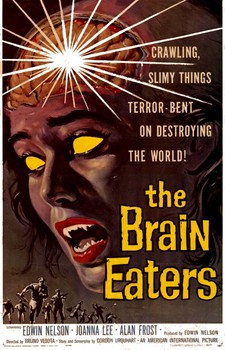
In Illinois farmland a silo appears. Well, a cone. There were already plenty of silos but no one notices them.
The cone sits there. Cone sitting.
Anticipating a plague of Cone Heads, a loud mouth Senator in Washington is granted executive authority by the President, who did neither constitutional law nor political science, to deal with the cone.
Big Mouth goes to Illinois and orders everyone around. Yawn, went the fraternity brothers. Ed crawls into the cone and finds nothing. The mystery deepens.
Meanwhile there have been three or more murders in the nearby small town. Huh? We see one in the opening sequence. A few people run around with a glowing basketball tucked under their coats. Hoosierland is indeed hoop country.
 See.
See.
There is one excellent scene early in the mayor’s office where he behaves oddly. Very. It is very well shot, a la Orson Wells, askew. Mayor goes ballistic. Literally. With a gun. Something is wrong! Got it. This scene is very well acted by the distraught mayor and nicely filmed. Much better than anything else in the picture. So much so, the fraternity brothers wondered if it was excerpted from another movie. The more so, since we never see or hear of the mayor again. Perhaps he was desperate to escape the rest of this movie. A wise man he proved to be.
More milling around and yelling occurs. Big Mouth makes many telephone calls, sends telegrams, tells a…. Ooops. No one replies to his missives. That cannot be right, he yells. I am too important to be ignored! Really? Think so?
Meanwhile the clock is ticking. Ever so slowly.
They realise the cone, which has been the focus of such attention as there has been, is a decoy. The real threat is elsewhere. Quick on the uptake, not. The attackers are moles from underground, not aliens from the stars. Huh! So that flash of light at the start was…a blown bulb, or what.
Meanwhile more and more people adopt the Quasimodo look. Finally there is a confrontation with Mr Spock, a noble suicide, a crashing bore, and the end.
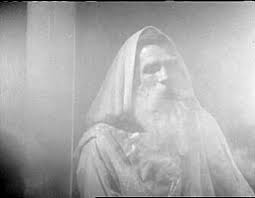
Mr Spock is credited as Leonard Nemoy. Ah huh. He got the last laugh.
The inference is that the glowing basketballs were eggs and when they hatch the tribbles that emerge fasten onto the nearest human spinal column and munch away. The infected human becomes a soulless automaton perfect for attending McKinsey management training seminars ad nauseam.
There is intrusive narration. When our heroes go to the telegraph office, the voice over tells us that they are at the telegraph office in case we missed the big sign that said ‘Telegraph Office.’ And so on. Perhaps that was a service for blind members of the audience. The use of such voice overs rather than dialogue indicates the lack of sound technician. One of the many lacks in this case.
Without a doubt it is derived from Robert Heinlein’s Sy Fy novel ‘The Puppet Masters’ (1951). Heinlein sued and settled out of court. Executive Producer Roger Corman agreed, says the web gossip, to buy the screen rights to two Heinlein books and not to put Heinlein’s name anywhere near this one. Corman did not use the rights he bought. That is very unlike Mr Tightwad. It took another forty years for ‘The Puppet Masters’ to be filmed, as reviewed elsewhere on this blog.
Month: September 2018
‘The Puppet Masters’ (1994)
IMDb runtime is 1 hour and 49 minutes, rated 5.9 by 7552 cinemitizens.
Genre: Sy Fy
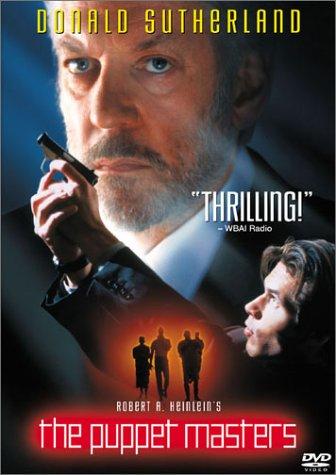
Verdict: Des Moines never looked better
In a small town in Iowa, but not blue-eyed Riceville, a spaceship lands and thereafter everyone is as dead-eyed as a born again Republican. They lose interest in sex and, believe it or not, in football!
The Masters proliferate at an alarming rate endangering the future of the Iowa caucus. To avert that catastrophe the resources of the distant and oppressive Federal government are mobilised in the person of a Canadian. Huh! Go with it.
The Masters attach themselves to the backs of victims, who seem to enjoy the experience, without leaving a wrinkle in a shirt or a hump under a blouse. Amazing.
The first fifteen minutes are whiz bang. The ship lands. Teenage boys find it. A baseball bat figures. Next thing you know everyone in town has a Master. The Feds come to check and shoot ‘em erupts in the local television station’s office.
After that rattling start the pace slows, and slows, and slows, punctuated by gratuitous fisticuffs, shoot ‘em ups, and chases that go around in circles. Regrettably it does not feature the (infamous) Des Moines Sky Walk, about which more below.
The Masters turn hosts into automatons who hate immigrants, blacks, homosexuals, success, table manners, Democrats, and good sense. Hmmm.
While there are two scenes where communication occurs between a Master and a man, these aliens seem to have no program. They are there to destroy, not to do anything more. Many have concluded that they were Republicans. I couldn’t possibly say. They make no plea that they have to do this to survive, that their home world has or is going to perish, that they bought Earth in good faith at a Milky Way real estate auction, that God told them to do it, that their KPIs require it, or any of the other standard tropes of the genre. In this respect the Masters fall short of ‘Teenagers from Outer Space’ (1959) who came to farm lobsters, a film reviewed elsewhere on this blog, hidden in a collective comment on several films. Search away. Or for that matter, ‘The Lobster Man from Mars’ (1989) who came to steal oxygen, also reviewed on this blog. Get to clicking to find it.
I cannot remember the book, which I read as a teenager, well enough to add anything sensible. ‘Guffaw,’ went the fraternity brothers. Right on cue. [Subsequent note, I did try to re-read after drafting these words of wisdom but found its 1950s machismo hard going. It reminded me vaguely of the stories in men’s magazines of the era in barbershops.]
The film is repetitive and violent and the FBI warning contains the following note. The film has ‘violence, gore, and BRIEF LANGUAGE.’ Yep. That put the fraternity brothers on high alert. Violence? Check. Gore? Check. But, whoa, brief language? Nope. There is a lot of yapping.
There is much running around in Des Moines car parks and the city hall environs. The energy is high; the meaning is low; the character development is zero. Muscle is supposed to be Canadian’s alienated son. ‘So what,’ asked the fraternity brothers. Good question, since we never do find out what to make of that except that Canadian wears Armani suits. There is sex interest in an exo-biologist but there is neither spark nor sparkle there. Linda Fiorentino would have burned a hole in the screen in that role, but this player is bland on bland. By the way, Keith David nearly steals the show in a supporting role. Don’t blame him for the final turn which came from the writer and the director, not the player.

Likewise, Will Patton, as the nerd boy who figures a lot of it out, is a pleasure to watch.
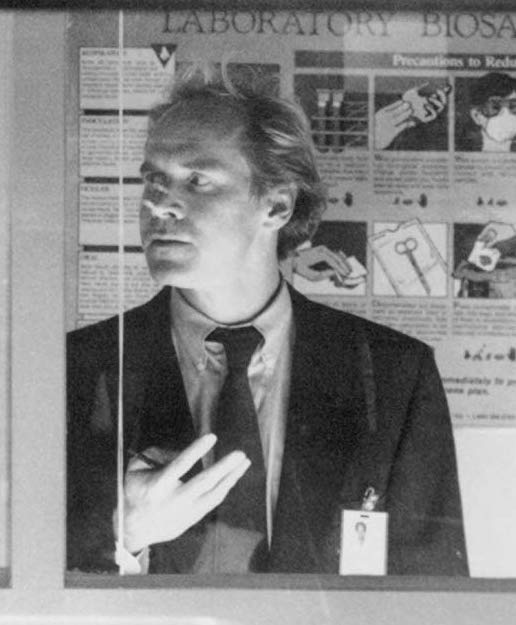
But we don’t get a lot of thinking in this slam-blam adaptation. Yaphet Kotto is entirely wasted as an empty uniform.
Sometimes killing the host kills the parasite and other times it does not. Mostly it does not, but when the parasite ridden bodyguards of the President are mowed down, the parasites go quietly. That puzzled the fraternity brothers, briefly. Nothing stays with them long.
The stunt work is fabulous with nary a CGI in sight. The night para-glide into the heart of darkest, alien infested downtown Des Moines was great fun. But once there it is the same old, same old. The running, jumping, falling, fighting, shooting was masterful if one wants it. But after the fourth or fifth time with no forward progress in the story or the people, well, who cares.
While the critics linked to the IMDb comment on the small budget, it seems to be large and talented cast with plenty of money for stunt work. The list of stunt men and women acknowledged in the credits rolls on and on.
The story comes from Robert Heinlein’s 1951 novel, in which it is clear that the parasites are Commies sapping the vital red, white, and blue juices from Americans who are too dumb to know that they are being drained. Heinlein has a claim to be the Dean of Sy Fy in the 1950s. He was an Arctic Cold Warrior – seeing reds as slugs, bugs, and cruds. Slugs in this outing. Bugs in ‘Starship Troopers.’ And cruds in ‘Red Planet.’ And under every bed, disguised as dust bunnies.
The patience of readers to this point is rewarded with a comment on the Des Moines SkyWalk.

It was built in the 1970s to allow downtown office workers to traverse its four miles of elevated walk ways in comfort, out of the weather of the Great Plains. It connects to several large car parking garages, a bus exchange, office blocks, city hall, retail malls, a sports complex, hotels, and is dotted with cafés, fast food franchise, laundries, and the like. It served two purposes, one, to keep jobs in the downtown area rather than in outlying business and industrial parks, and, two, to attract companies to locate in Des Moines.
We used the SkyWalk in Des Moines and learned a sad lesson. Everywhere else in the known world North is always at the top of a map. Not so in Des Moines. When we paced the SkyWalk we saw helpful, illuminated maps at every junction and read these to navigate. BIG MISTAKE. Soon we were going around in circles and off course. Why? How could this be? We looked more closely at the maps, one after another. On some North was at the top, where it should be. But on others it was to the right, or left, or a diagonal, or at the bottom. No two consecutive junction maps had the same orientation. Believe it or not, Ripley!
The maps were useless to outsiders. And no doubt were never consulted by locals. While there is some information on the SkyWalk to be found on the internet none of it addresses this fundamental point. Is it any wonder that no famous explorer ever came from Iowa? Couldn’t find north.
There is an app. Wonder where north is on it? No plan to find out.
While the RÉSO in Montréal has far fewer maps, they are consistent and put the true North, strong, brave, and free where it should be.
It seems the SkyWalk has kept jobs in the downtown, about 75,000 of them according to the Chamber of Commerce, and in so doing has brought new opportunities to Des Moines. It has also obeyed the law of unintended consequences and nearly destroyed street level commerce. Everyone uses the SkyWalk in preference to the street. There are virtually no walk-ins to businesses on the streets. The space for businesses on the SkyWalk is much less than on the street, so the net effect is to squeeze out small businesses from downtown.
So it is said. I would say Iowans are going around and around on the SkyWalk because they cannot find north.
Michael Shayne’s Seven embodiments by Lloyd Nolan (1940-1943)
Lloyd Nolan made seven B movies as Michael Shayne in the early 1940s. Within the limits of the genres, Noir and Comedy, they vary. Only one of them includes any reference to World War II. The details of the seven follow my comments.
‘Sleepers West’ is the most interesting.
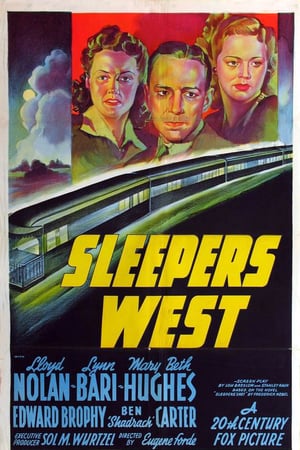
Shayne escorts a secret witness on a train ride from Denver to San Francisco while villains on board plot to terminate that witness. The touch is light, and there is marvellous subplot involving two journeyman actors, Mary Beth Hughes and Louis Jean Heydt, a rarity to see these two with a chance to act, and they take it.
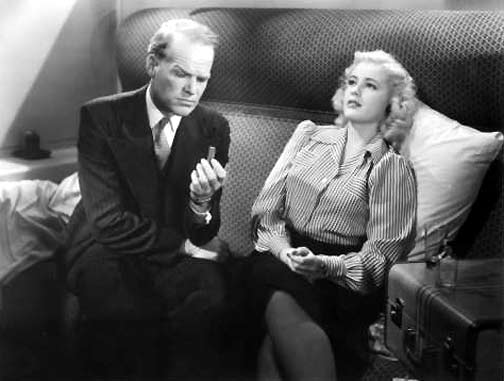
The result is pathos amid the action. In another sidebar the train engineer has his moments, too, as does the fireman shovelling the coal. Further enriching the film, Lynn Bari crackles with intelligence as a newshound.
There is a deadly serious take on this story in ‘The Narrow Margin’ (1952).
‘The Man Who Wouldn’t Die’ is excellent in its noir mood. There is a separate review of it elsewhere on this blog. Seeing it stimulated me to watch the whole set.
Dressed to Kill’ is theatrical in its setting and has a convoluted plot.
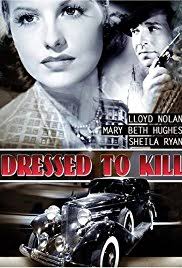
It is formulaic but done with vigour. Henry Daniell adds the caustic tone in which he specialised. It seems all too typical of the times that the two actors playing the black stereotypes are mismatched in the credits. Most of the action takes place on the ocean liner. Superman is there, Steven Geray adds his Hungarian accent, but the real surprise comes at the end. No spoiler. There is a pip of a scene early in the piece in a convenience store run by Frank Oth and Mae Marsh, two veterans who shine in their small parts.
‘Time to Kill’ puts Shayne into Phillip Marlowe’s shoes with a variation on Raymond Chandler’s ‘The High Window’ aka ‘The Brasher Doubloon’ (1947).
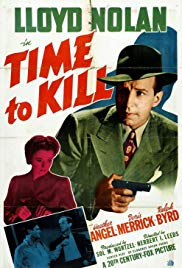
It gets the highest rating from the cinemitizens.
‘Just off Broadway’ starts and ends in a court room where Shayne takes over proceedings. Sergeant Bilko enlivens the show. The knife-throwing act is better done in this instance than in most other films. Was it for real? Marjorie Weaver, a veteran of other titles in this series, is pitch perfect as his gal pal. No idea how the title applies to the story. There are two oblique references to the war in this one.
1.’Michael Shayne, Private Detective’ (1940), 1 hour and 17 minutes rated 6.7 by 317, released 10 January 1941.
2.’Sleepers West’ (1941), 1 hour and 14 minutes, rated 6.8 by 303, released 14 March 1941.
3.’Dressed to Kill’ (1941), 1 hour and 14 minutes, rated 6.5 by 862, released 16 October 1941.
4.’Blue, White and Perfect’ (1942), 1 hour and 14 minutes, rated 6.8 by 264, released 6 January 1942.
5.’The Man Who Wouldn’t Die’ (1942), 1 hour and 5 minutes, rated 6.7 by 340, released 1 May 1942.
6.’Just off Broadway’ (1942), 1 hour and 5 minutes, rated 6.1 by 122, rated 24 September 1942.
7.’Time to Kill’ (1942), 1 hour and 1 minute, rated 7.0 by 124, released 22 January 1943.
Thereafter Nolan like much of Hollywood concentrated on war movies. He compiled 160 credits on the IMDb, but given how ubiquitous he is, that seems too few.
‘Murder Chez Proust’ aka ‘Meurte chez Tante Lèonie’ (1994) by Estelle Monbrun
GoodReads meta-data is 256 pages rated 3.0 by 27 litizens.
Verdict: Best for Proustians
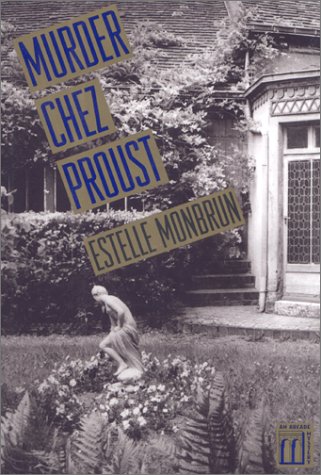
A small conference of Proustians gathers at Illiers in Aunt Lèonie’s house now a museum dedicated to the sickly Marcel. The organisers include the unscrupulous Adeline whose speciality is blackmailing others with her own remembrances of things past. She brow beats her timid secretary who is also at the mercy of her PhD dissertation supervisor, a man combining all the worst features of a god-professor, one who smokes. To add to the spice, Adeline has both a lover, who really does love her, and a fiancee. Neither of whom see her faults, so readily apparent to others. In the case of these two men, love is not only blind, but deaf and dumb.
In addition to the locals, a party of American stereotypes has descended on the conference. Well, the French did invent the concept of ‘chauvinism.’
The plot thickens when Adeline is found dead in the house museum. Inspector Jean-Pierre Foucheroux is there to investigate along with his sergeant Leila Djemani. These two soon establish a long list of people with motives to harm Adeline, including all those mentioned above and more. In fact, just about anyone who ever met her.
There are some apposite Proust references, but never enough to satisfy a Proustian and too many for others. There is the usual bluster from witnesses, and the secretary is so timid it is hard to believe she is a Parisienne of thirty.
Foucheroux and Djemani (nicknamed Gimpy and Chipmunk by colleagues) make a good pair of sleuths, and I liked the context. But the pace is slowed by Foucheroux’s backstory, a matter of indifference and irritation to me. While the characterisations are largely cardboard, I did love the displays of scholarly pretension in several of them. That part rang true. God-professors, indeed.
 Estelle Monbrun
Estelle Monbrun
The author is a teacher who has no doubt seen all of these characteristics on display more than once. She has several other titles of the same ilk.
As I was finishing this book, I thought it so-so. Then I read the author’s afterward, which I found charming, informative, and engaging. Maybe I will read another one. She being a serious literary scholar had no ambition to write a novel, until moving to St Louis and discovering the necessity raking leaves.
Huh?
She went at leaf raking with such conviction that it led to a herniated disk, and while lying abed contemplating her errors, lacking the concentration to bandy lit crit, she wrote this krimi. By placing it is chez Proust, by dotting it with Proust bons mots, by populating it with Proust enthusiasts, she hoped it might entice some readers to turn to the man himself. The pleasure in forming that ambition led her on to other writers, e.g., Collete, Montaigne, and more.
Moi, I never went at leaf raking with conviction, though I have certainly gone at it, marvelling at how many leaves a couple of trees drop. The last time I did this I had to stuff them into large orange bags because these were collected to later be opened and the leaves shredded and the bags re-used. Well that was the story. However the low bid contractor had taken the money and run, and the bags were all going — unopened — into land fill. But we rakers, until the story was blown, had the comfort of supposing the work of bag stuffing had an environmental benefit. Ha, ha, ha. OK but you try stuffing endless leaves into orange bags to see how much fun it is.
‘I Walked with a Zombie’ (1943)
IMDb meta-data is runtime of 1 hour and 9 minutes, rated at paltry 7.2 by 9211 cinemitizens. Released on 30 April 1943.
Genres: Horror, Drama
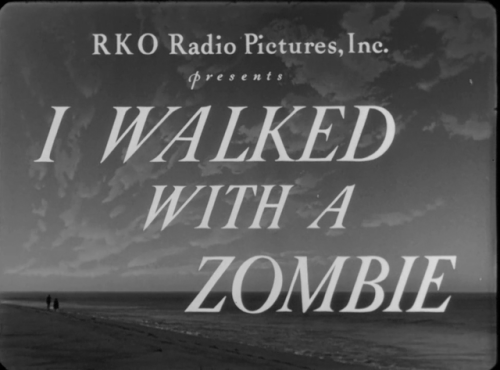
Verdict: Jane Eyre in the West Indies.
On a blustery day of snow and wind in frozen Ottawa a pert young nurse is offered a post on a tropical island at a good rate of pay, expressed in dollars.* Off Nurse goes to San Sebastien where she meets the half-brothers Smooth and Touchy. Her assignment is to look after Mrs Smooth. ‘An invalid?’ she asked. No….. She meets Mrs later that night as a hot wind stirs the palm trees and rustles the cane fields. Disturbed by the sound of crying, Nurse finds the sleepwalking Mrs in a spooky tower.
There is tension between the brothers and it seems to relate to Mrs. James Bell gives an Oscar-worthy performance as the local doctor who mediates between medical science and the voodoo gods. The ambiguity remains throughout.
Smooth says that his family is cursed by its history as slavers. He is as morose on this island paradise as a doomed, grey man in the Nordic ice fields written by Henrik Ibsen, bearing the sins of his fathers. While Touchy defers to Smooth as the elder brother and as manager of the cane plantation, he assiduously undermines him. (Reminds me of so many people I have worked with in that passive-aggressive mien.)
The slave past remains in the local culture. When a baby is born the blacks cry for the pain and grief of slavery it will endure. Death is a time to celebrate release from those pains.
There is one creepy segment in a sugar cane field at night.
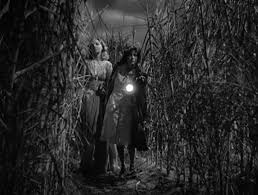
This episode might be the most memorable in the film, especially the line, ‘She does not bleed.’
A number of blacks populate the scenes, mostly in the background. But the crooner has some very pointed lyrics, delivered twice. He is credited as Sir Lancelot, born Lancelot Victor Edward Pinard and raised in New York City. Theresa Harris lights up the screen as Alma, who knows far more than she says. She has more than a hundred films on the IMDb, often uncredited and inevitably as a maid. Darby Jones
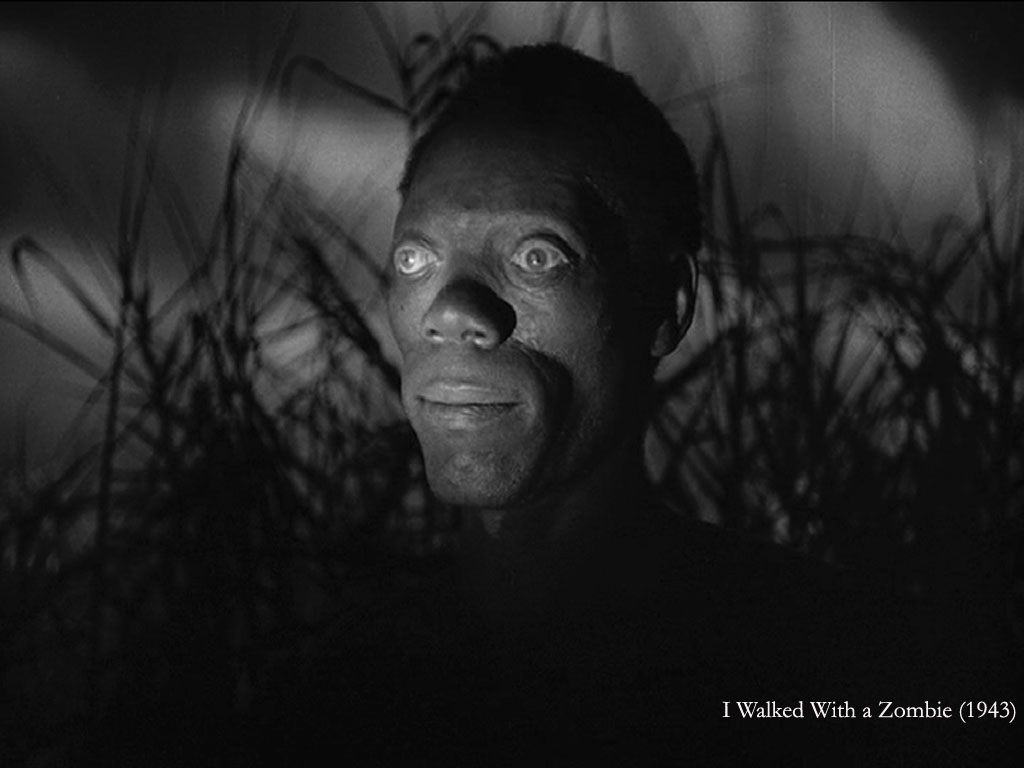
was cast for his bug eyes yet he remains dignified. He made a career out of jungle movies. The dancer who compels Mrs is the dynamic Jieno Moxzer. This is one of only two credits on the IMDb. Our loss.
None of the blacks is reduced to the comic stereotype so tiresomely common at the time in movies. That in itself is noteworthy. Added to that is the guilt of slavery articulated by Smooth, and it is a surprise package. Though there are some disparaging remarks in the script that irritated the fraternity brothers.
The screenplay is by Curt Siodmak, he of a long list of Sy Fy and Horror credits, and Ardel Wray. Some of the internet opinionators argue, well, assert, that the story is unusual for Siodmak. Not so sure myself. The air of menace, showing rather than telling, the concentric circle of stories are all motifs Siodmak used. But there is no doubt this one has emotional depth that may have come from Ardel Wray.

She, by the way, for refusing to rat people out was grey-listed during the Witch Hunts a few years later. Ergo her film credits are few. Grey-listing led her to work as a reader and editor in the back office at Warner Brothers. No longer getting screen credits kept her profile low.
After the debacle of Citizen Orson Wells at RKO, the studio was in dire financial straits. It was imperative to get revenue and there was little or no money. Val Lewton was appointed head of the B-Movie unit at RKO and he was handed a backlog of properties with deadlines for completing them. The KPI was $.
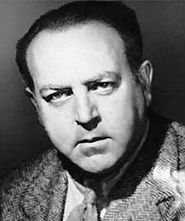 Val Lewton
Val Lewton
Most of these properties were short stories, which had been purchased to get the titles, not the narrative, in the way that one today might purchase an internet domain to get the name, not the content. He then assigned titles to writers to produce screenplays quick-smart. Likewise he had to work with directors, technicians, and actors already on contract.
This film is one result. It was made on a micro-budget but with clever lighting, accomplished camera work, skilled editing, and brisk direction, it looks like an A-movie. Much of the credit for all the preceding qualities has to go to the director, Jacques Tourneur. His other credits include ‘Cat People’ (1942), ‘Leopard Man’ (1943), and ‘Out of the Past’ (1947). Winners all. He specialised in film noir. He, too, suffered from the Witch Hunts of the time, finding it opportune to return to his native France for extended vacations at times.
Though barely more than an hour long it is chocked full of characters and incidents, each carefully defined. Yet it does not seem rushed or crowded. It is another exhibit for a masterclass on film-making.
*One quibble though, it was only in 1949, per the fount of Wikipedia, that Canada introduced its dollar to replace the British pound.
Careful viewers will note that as the opening titles roll there is a disclaimer that ‘any similarity to any persons living, dead, or POSSESSED, is entirely coincidental.’ I put the capitals in for emphasis.
